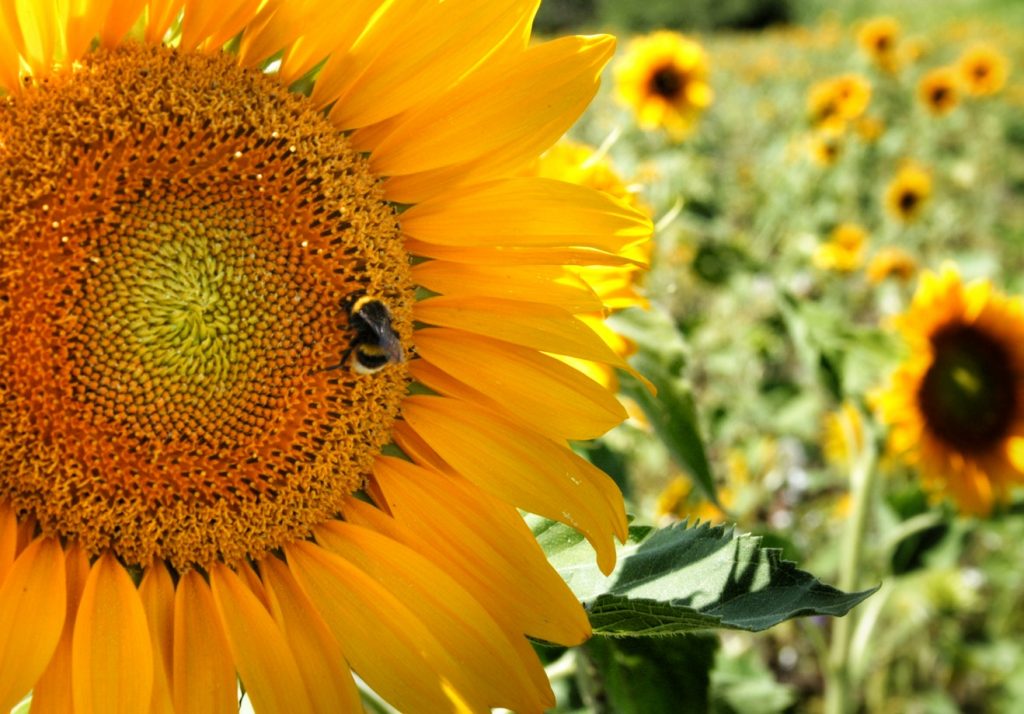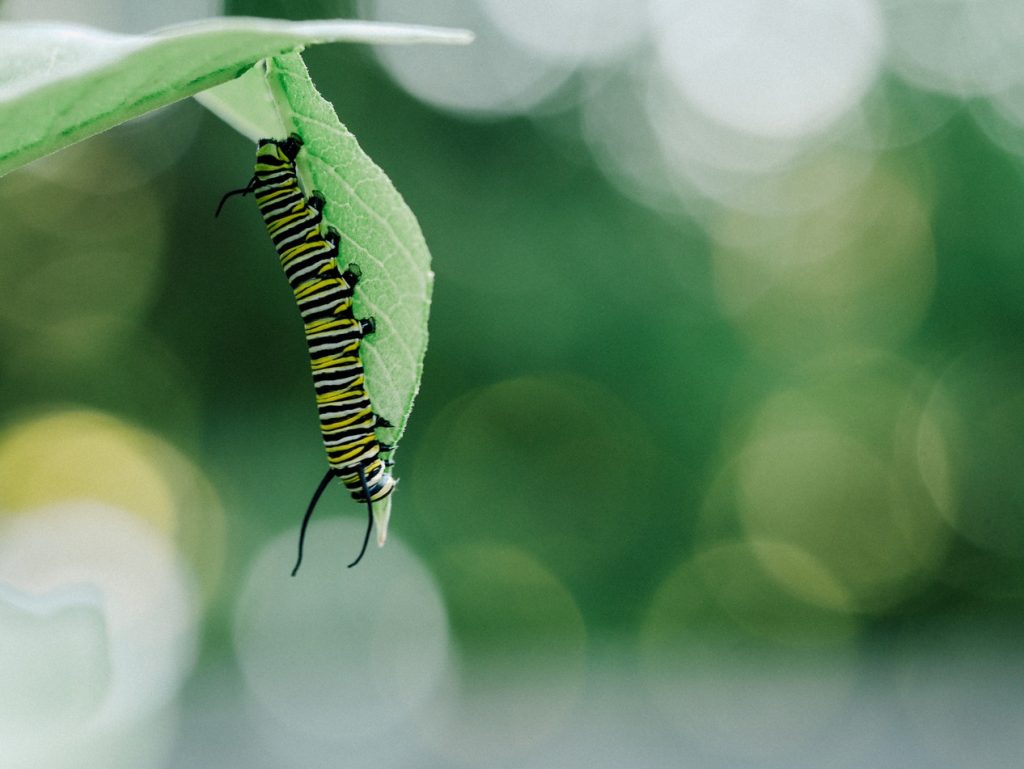How to Build Habitats for Beneficial Wildlife
Why should we build habitats for beneficial wildlife? Mainly to create safe places for wildlife nesting, roosting, and raising offspring. Places where wildlife can seek cover from severe weather conditions and predators. It is so important for gardeners to help build habitats for beneficial wildlife for several reasons. The first reason is the US population growth. The dramatic increase in population and home building has reduced the forestlands that native wildlife can inhabit.
Another reason for the shortage of wildlife habitat, is due to the many forest fires across the country. These forest fires have decimated thousands of acres. This is especially true in the western part of the US. Other parts of the country have experienced severe drought conditions that have made some forestland unlivable because of the lack of water. All land based wildlife needs access to reliable clean water resources. Lands that are drought prone present a survival problem for wildlife and their habitats.
Interactive Wildlife Map
The U.S. Forest Service provides an Interactive Wildfire Map. The map displays the Active Incidents of wildfires. Using the Legend, you can quickly see three fire symbols or icons. The light pink fire icons indicates that a particular forest fire is impacting an area that is less than 10,000 acres. The medium red fire icon indicates forest fires that are affecting between 10,000 and 100,000 acres. And the deep red fire icon reflects forest fires with over 100,000 acres affected! Can you imagine the number of wildlife habitats that have been destroyed?
Reduction of Forestlands
With the elimination of forestlands, either through migration of people or natural disasters, we must push forward to find a way to replace lost habitats. Our wildlife’s survival depends on finding other nesting habitats. Simple changes to our yards can help build habitats for beneficial wildlife. Regardless of how small your yard is, gardeners can create a garden space for beneficial wildlife. Help protect our native wildlife by providing shelter using plants or providing fresh water. Maybe even refrain from using extermination services, as they can potentially harm our beneficial wildlife. Consider creating a garden where beneficial wildlife can help you maintain your garden. Rather than using expensive bug sprays and pesticides in your garden think about safe alternative ways to keep harmful bugs away.
A great way to control harmful bugs is by attracting beneficial wildlife. Beneficial wildlife can act as a natural defense. They can help your garden stay healthy, thrive and be productive. So, how do you go about acquiring beneficial wildlife? There are four components necessary to attract wildlife to any garden. The first component is to provide a variety of food sources year round. The second component is to provide a reliable clean water source. Third, build habitats for beneficial wildlife that offer protection from the weather elements and predators. These habitats are vital for survival of many wildlife species. Finally, these habitats can be utilized for nesting and a safe place for raising offspring.
Year Round Food Sources

Provide year round food source for wildlife. During the warmer months, food is easily found by wildlife. This is not so easy during the Winter months. The most critical time is during the cold winter months when food is especially scarce. To create year round food sources, it is best to use native North American plants. To help provide food for wildlife, be sure to read our post on How to Create a Wildlife Sanctuary With Native Plants.
Reliable Clean Water Source

A reliable clean water source can be as simple or elaborate as you’d like. A simple shallow saucer size bowl filled with gravel and large stones topped off with water works nicely. If you prefer, have an elaborate fountain or large pond with fresh water. There are many possibilities.
Build Habitats for Beneficial Wildlife
Protection From Weather Elements and Predators
Build habitats for beneficial wildlife that provide adequate shelter year round. All wildlife needs protection from the weather elements such as wind, rain, thunderstorms, hail, or severe temperature changes. This is especially important when severe weather storms approach your area during the Winter season. Wildlife also needs a safe place or house where they can seek safety from predators such as snakes.
Build Habitats Using Old Wood Logs

One inexpensive and effective habitat is a pile of old wood logs. Build this habitat, by placing old decaying wood logs in a small pile under a shady garden area. Add some yard debris to the log pile such as branches, chunks of bark pieces, and a few leaves. The logs can be laid in a slightly elevated manner to create multiple crevices and entryways that lead deep into the pile. This organic shelter will provide cover and escape opportunities for countless wildlife. Some wildlife that you may see in the log pile are insects, bees, frogs, toads, beetles, or hedgehogs. The log pile can be placed under a tree, by a shrub, or closer to a garden shed or structure.

Another area where wildlife typically seeks shelter, is the cavity of a fallen tree or a tree standing. Wildlife such as birds take shelter and nest in hollowed tree logs or in a shaded log pile. Frogs, toads, beetles and others shelter underneath or inside the crumbling wood. Trees and shrubs especially evergreens can provide shelter and food for wildlife year round. If you have room for a fallen tree to remain in your yard undisturbed, then do so unless the tree is a problem for people, pets, or property.
Take the time to look around your yard and see if there is a place that you can add a wildlife habitat to. Maybe a remote or lightly used garden area in your yard could support a habitat. Once you’ve identified a garden space, simply leave old logs in a remote shaded garden area. And if you encounter any old stumps, garden around the stump so that wildlife can settle into the stump. Consider planting a shrub or ground cover to provide shade and conceal the stump or logs. You’ll eventually notice some activity from wildlife as it settles into the log pile or hollowed cavity.
Build Habitats for Beneficial Wildlife Using Plants
Plant life is mainly thought of as a source of food for wildlife. But it is equally important for providing cover, protection, and even shelter for wildlife. Plants provide shelter for wildlife in various forms. Decaying tree and shrub branches or trunks can provide protection, nesting, and escape opportunities. These naturally occurring shelters can be expanded by adding handmade structures.
Thicket of Trees, Brush, and Vines
A thicket is an excellent wildlife source for shelter. Thickets can include evergreen or deciduous plants or both. Evergreen plants will provide shelter year around with escape opportunities. Deciduous plants that drop their leaves in the Fall, they may lose its effectiveness during the Winter months. Natural thickets have dense vegetation of trees, brush, vines, and grasses. Natural thickets are more frequently seen in rural areas or areas where plants were left undisturbed for years. Shelter with living plants in a layered habitat is possible and a step for providing wildlife in a wood-like environment.
If you’ve ever spent time clearing overgrown brush, you’ll notice small nests that are entwined in the brush. A thicket is an ideal secluded spot for protecting nest eggs and offspring from predators. We’ve encountered several small abandoned bird nests in a large thicket along the front of a neighbors fence.
Mature Dead Plants
Decaying holes or cavities in tree trunks or branches are used by wildlife for cover, shelter, and escape opportunities. These hallowed areas are a favorite of wildlife and at times used by multiple species. A single large decaying tree can have multiple crevices with numerous wildlife sheltering within the decaying tree. The decaying tree itself can be a food source for insects. A fallen tree provides cover for dens and roosting sites for many wildlife. Reptiles, amphibians, insects, and small mammals can burrow under and into logs for refuge from predators and the weather elements. In cooler days, wildlife can bask in the sun using the decaying tree as a resting platform to warm up. The hollowed area with access to open air is used by some bird and bat species.
Dead plants or snags are an excellent resource for wildlife. Although consider by some as an eyesore or potential fire hazard in some communities, snags are beneficial for wildlife.
Blessed Bees

There are nearly 5,000 species of native bees in North America. Most are solitary, friendly bees that nest in the ground or burrows in twigs and dead tree limbs. They are not aggressive and rarely sting. Bees such as bumble bees, carpenter bees, sweat bees, leafcutter bees, and digger bees pollinate a variety of plants. If you are grow fruits or vegetables it is beneficial to have a bee habitat or bee hotel nearby. Bees help increase your harvest of fruits and vegetables.
Insecticide Use
Incredibly sensitive to insecticides, avoid using insecticides when bees are present. If necessary, only use an organic insecticide. The best time to spray the organic insecticide is in the evening when bees become less active. If harmful bugs are a problem, consider attracting more birds or even toads for effective non-beneficial insect and mosquito control in your garden. There are several plants that are effective at repelling some harmful insects. Consider using bug repelling plants rather than using insecticides. Fragrant Hidcote Lavender is a prefect example. Hidcote Lavender repels moths, scorpions, water scorpions, fleas, flies, and mosquitoes. Spraying insecticides may harm our pollinating bees.
Bees love most flowering plants. Bees seem to be attracted to blue and yellow flowers. Maybe test this yourself to see what type and color of flowers attract bees to your garden. The most effective solution for attracting bees is have a variety of plant species that bloom the Spring, Summer, and Fall seasons.
Build Habitats for Beneficial Wildlife with Bee Hotels and Bug Boxes

Build habitats for beneficial wildlife such as insects and bugs. Bees and some insects are beneficial pollinators. Provide shelter for these flying pollinators by adding a bug box or a bee hotel to your garden. Both insect or bug boxes and bee hotels can be handmade quickly and fairly inexpensively.
Bug Boxes

Attach bug boxes for beetles, bugs, and other insects on a wall or fence. Ladybirds or ladybugs are small beetles that use bug boxes. They along with spiders, lacewings and other insects take shelter or hibernate in bug boxes. Bug boxes can easily be handmade. A typical bug box has a wooden frame with roof that is filled with insect nest building supplies. Building supplies such as straw, bark, bamboo cane, leaves, pine needles, and pine cones. The bug box should be mounted at a slightly angle faced downwards. This will prevent rain from seeping into the box if it is mounted on a vertical surface.

As an alternative to making your own bee hotel, there are many retailers that offer bee hotels or bug boxes. Some boxes or hotels come with stakes and for others you purchase a stake separately.
Bold, Beautiful Butterflies

In North America, there hundreds of butterflies and moth species of insects. Butterflies and moths both hatch from small eggs into larvae or caterpillars. Caterpillars mostly eat to attain their full length and weight. They form into a pupa or chrysalis. While inside the pupae, they develop into a butterfly or moth. They emerge from the pupae and begin searching for a mate to reproduce. These are the four life cycle stages of butterflies.

Adult butterflies consume nectar or the juices of ripen fruit. To attract native butterflies to your garden, use native plants commonly found in your neighborhood. Supplement your garden with nectar feeders or hang ripen fruit to attract native butterflies.
Butterflies tend to be more active during sunny, warm days whereas, moths are active in the evening hours. On cooler days, butterflies will bask in a sunny spot to warm up. Basking sites can easily be added to your yard or garden for use by butterflies and other wildlife for warming up. Either add a concrete garden sculpture or large rock or boulder to create a basking spot for butterflies and moths.
For clean water, place a shallow dish of water for butterflies or moths to drink water. Some gardeners use a terra cotta saucer as a base with two larger rocks and a few handfuls of gravel. Fill the terra cotta saucer with water to cover the gravel, the two larger rocks remaining mostly above the water level. The butterfly puddling station will draw thirsty butterflies. Clean the shallow dish every 2 to 3 days and refill with fresh water.
Butterflies find shelter between crevices of rocks, in blades of grass, or the underside of a leaf. These garden shelter sites are used by butterflies for sleep, in the evening, or during extreme weather conditions.
Brilliant Birds

A valuable pollinator, birds are hardworking and beneficial wildlife. In fact, birds are a garden’s best friend. Some birds nest in cavities of dead trees, in thickets or shrubs, above in trees, and in birdhouses. Other birds will nest underneath eaves or rooflines. For information on building habitats for beneficial wildlife such as birds, see out post 10 Blissful Birdhouses to Attract Birds that Serenade.
Beneficial Bats
Bats are beneficial wildlife that control night flying insects such as mosquitoes, moths, and beetles. Insect-eating bats can devour between 600 to 1200 mosquitoes an hour. Bats can consume their body weight in insects every night. A natural bug control, bats help us manage harmful insects. Some also bats eat fruit, nectar, or carnivorous that prey on small mammals.
Bats are valuable pollinators too. If you are interested in attracting bats to your garden, consider installing a bat house. A bat house can be used as a roosting habitat. The placement of bat houses should provide Sun and protection. Bat houses need Sun most of the day and be on a pole a minimum of 15 feet from the ground.
Some bat species like gray bats, red bats, and hoary bats use shrubs and trees for roosting under loose bark or in cavities. Some bats migrate to caves, mines, or buildings to hibernate over the Winter season. While hibernating over the Winter season, bats should not be distributed. If this hibernation period for bats is interrupted, this could diminish their chances for survival. They tend to be timid of people and generally do not approach people. Bats can be watched but never handle or pursue one. If you attempt to handle a bat, they may bite.
For more information about bats, see Defenders of Wildlife, based in Washington D.C, or The Nature Conservancy, based in Arlington, Virginia.
Habitat for Toads and Tortoises

Shelter for beneficial reptiles and amphibians can be added to your garden area. Simply gather some rocks and form a pile on a sunny garden spot. Rock piles will provide basking sites for frogs, toads, tortoises, lizards, and snakes. In addition, plant shade tolerant groundcovers under trees or around shrubs to provide a cool sheltering place for reptile and amphibian wildlife.
The reptile and amphibian habitat should include moist hiding places, shallow pools with plant cover and hopefully provide an abundance of insects. Develop multiple habitats for beneficial wildlife such as toads and turtles by using plants to shade wood stumps, logs, and rock piles. Build these habitats near shrubs or in garden beds. Another simple habitat, is the placement of a clay flower pot laying on its side. Sink the flower pot with the opening facing North and partially filled with soil. The flower pot becomes a home for toads or a toad abode. Just add a shallow water vessel with fresh water near the toad abode in your garden. This is an easy, quick and budget-friendly habitat that gardeners can provide to attract toads.

To attract tortoises to your garden, place softer, flat rocks in sun-baking areas. Tortoises need areas for cover and shade among low growing plants and shrubs. They tend to burrow in leaf piles or soak in marshy waters underneath vegetation. Always provide fresh, clean water. Amphibians and reptiles need fresh water for drinking and bathing.
Shade covered wood stumps, logs, and rock piles are useful yard areas that reptiles and amphibians can take cover in. Although some gardeners may be reluctant to have certain wildlife in their yards, they are helpful. Many species are harmless. Many of these species are beneficial in that they sustain themselves on insects or rodents.
Finally . . . .
As gardeners, we can help build habitats for beneficial wildlife. With the continued lost of forestland, it is critical to support our native wildlife. Play a role in this effort, no matter how small the effort is. Dramatic increases in home building and loss of forestlands, will only further strain the existing wildlife habitats.

If you build habitats for beneficial wildlife in your garden, let us know how you make out. We’d love to hear about your wildlife sanctuary, habitats, and native plants. For information on the native North American coneflower, see our post 14 Colorful Coneflowers to Brighten Your Summer Garden. For help with creating a Moonlight Garden, see our post 20 Plants to Brighten Your Garden by Moonlight. If you have any questions, feel free to reach out to us in the comments below. We always are ready to help you out.





